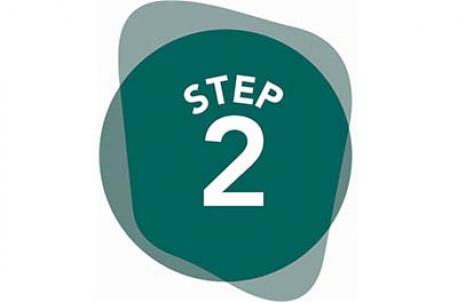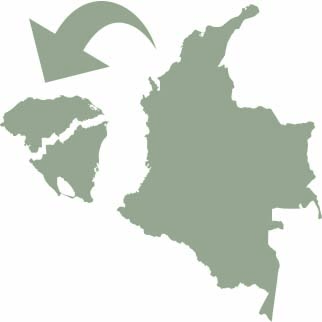
What specific, measurable changes do participants seek?
What does success look like?
Will these changes help participants make progress towards the change objective?
At this point, your knowledge exchange initiative should be anchored in the development goal and a change objective. While it is possible to reach some change objectives just using knowledge exchange, it is not very common. Since knowledge exchange is almost always a part of a larger development effort, it is more likely to catalyze progress towards the change objective than to achieve the objective on its own. This progress is measured by the achievement of intermediate outcomes.
Intermediate outcomes are what we most commonly expect to see, measure, and report after a knowledge exchange initiative. They reflect what participants want to learn, how and with whom they want to work, and how they want to act.
Knowledge exchange can result in five (sometimes overlapping) intermediate outcomes (results). The first four outcomes can also individually or cumulatively lead to the last outcome of “new and improved actions”:
- New knowledge: A person is more likely to act because of a change in awareness, attitude, or understanding.
- Enhanced skill: A person is more capable of acting because of a new or developed proficiency.
- Improved consensus: A group with a common interest or agenda is more likely or able to act because of new knowledge, changed attitudes, shared understanding, and improved collaboration.
- Enhanced connectivity: A group is more likely or able to act because of new or improved relationships, greater affinity, improved trust and reduced isolation.
- New and improved actions: A person or group initiates or modifies its activity because of what was learned, practiced, realized and/or as a result of shared understanding and improved relationships.
Think of intermediate outcomes as stepping stones leading to the change objective. Knowledge exchange can move your participants toward the objective by helping them address cognitive (know why), relational (know who), and behavioral (know how) gaps. Work with your counterparts to determine what gaps to tackle first and how knowledge exchange can address them.
When defining the intermediate outcomes, think first about what personal or group dynamics are preventing progress towards the change objective. Perhaps participants are not sure about how to address a challenge. Or it maybe they disagree on the way forward. Another possibility is that your counterparts seek ways to take an already successful situation to the next level.
Along with defining the intermediate outcomes, you will need to figure out how to measure their achievement. That is, you will need to identify indicators that show participants have learned or changed in the desired way. Table 2 will help you think through possible intermediate outcomes and indicators.
Sample Intermediate Outcomes and Indicators
|
The table illustrates the following process for developing results indicators for knowledge exchange:
|
||
| Intermediate Outcome | Type of Progress | Example of Indicators |
|
New Knowledge A person is more likely to act because of a change in awareness, attitude, or understanding. |
Raised awareness |
At the end of the exchange, at least 70% of participants indicate they discovered new mortgage options for those without documented income. 25% of city government planners will be aware of the community mapping applications for Dar es Salaam after the exchange. |
| Improved motivation/attitude | Six weeks after the exchange, 80% of participants will have taken at least two concrete steps toward a multi-institutional agreement on educational standards. | |
| Greater confidence | Nine of ten participants self-report that following the exchange they have increased belief in their ability to bring about desired changes within their Ministries of Health. | |
| Increased understanding | At the end of the exchange, all participants describe the value of private-public partnerships (PPP) to strengthen health service delivery in their countries. | |
| Acquisition of knowledge | At least 90% of participants can, at the end of the exchange, identify eight key characteristics of sustainable fisheries projects in their region. | |
|
|
||
|
Enhanced Skills A person is more capable of acting because of a new or developed proficiency. |
Application of knowledge |
The percentage of correctly entered micro-finance applications will increase from 45% to 95% within three months of the workshop. After the exchange, 75% of the farmers will be able to use the new high-yield rice growing methodology to increase their production. |
|
|
||
|
Improved Consensus A group with a common interest or agenda is more likely or able to act because of new knowledge, changed attitudes, shared understanding, and improved collaboration. |
Improved communication | The percentage of team members sharing and articulating their views during meetings will increase from 20% to 80% within three months of the exchange. |
| Stronger coordination | By the end of the exchange, t here will be agreement on the roles and responsibilities of key Project Delivery Team members drawn from the various ministries and agencies. | |
| Increased cohesion | After the exchange, all participants are unified in the need to more actively engage Afro-descendent slum dwellers as part of their national safety -net programs and agree to work together on developing a common approach. | |
| Stronger agreement | Within one month of the exchange, the partners will have agreed upon a blueprint for a national land administration program that covers both rural and urban land and outlines key roles of federal and regional levels. | |
| Increased commitment to agenda/group | Following the exchange, absenteeism from group meetings will decrease from 50% to less than 10%. | |
|
|
||
|
Enhanced Connectivity A group is more likely or able to act because of new or improved relationships, greater affinity, improved trust, and reduced isolation.
|
Increased membership | One year after the exchange there is 50% growth in the number of government institutions that report receiving help or advice through the Network on Migration and Remittances. |
| Increased network density | The number of current network members who support one another in the area of social inclusion programming will double within six months of the exchange. | |
| Increased sense of belonging | The numbers of members who invite others to join the group will double (from 20 to 40) within one month of the exchange. | |
| Improved trust | The percentage of network members that self-report trusting advice from other members will increase from 30% to 50% in the next annual member survey. | |
| Faster communication | Within six months, questions posted to the online forum will be answered satisfactorily in an average of three days (down from eight). | |
| Fewer isolated members | In the next quarterly member survey at least 75% of members will report having contacted at least one other member (e.g., by phone, email, or meeting). | |
|
|
||
|
New and Improved Actions A person or group initiates or modifies his/hers or its activity/actions because of what was learned, practiced, realized and/or as a result of improved collaboration and relationships. |
Preparation for action |
At the end of the exchange, the utility and ministry partners will have agreed upon an action plan for implementing new tariff policies. Local Governments allocate a budget to replicate the good practices of other local governments observed during a knowledge exchange. |
| Change in routine/working in new ways | Following the exchange, the project team will begin collecting beneficiary feedback for the first time. | |
| Maintenance of change | Within three months of the exchange, the ministry will produce an operational manual for implementation of the new policy and form a community of practice for regulators. | |
|
|
||
| Adapted from The Capacity Development Results Framework: A Strategic and Results-Oriented Approach to Learning for Capacity Development, World Bank Institute, Washington DC. | ||

Tanzania and India Exchange — Intermediate Outcomes
-
New Knowledge: Tanzanian officials in the Ministry of Agriculture (MOA), National Dairy Development Board (NDDB), dairy producers, processors, and distributors will have a better understanding of the constraints facing Tanzania’s dairy sector and have an increased belief in their ability to develop effective policies to improve its performance.
-
Enhanced Skills: Officials will improve their skills to systematically collect and analyze information all along the dairy supply chain in Tanzania.
-
Improved Consensus: Exchange participants will reach agreement on a blueprint of potential dairy sector reforms appropriate in Tanzania.
-
New and Improved Actions: NDDB participants develop an action plan to implement changes via a rapid results approa

Honduras, Nicaragua, and Colombia Exchange — Intermediate Outcomes
-
New Knowledge: Baseline and follow-up surveys with Honduran stakeholders will reveal improved knowledge of legal frameworks, stakeholder roles, consultation procedures, and governance of communal lands.
-
Enhanced Skills: Representatives of key public agencies responsible for implementing land titling and land regulation will develop proficiency in the process of demarcation and titling of indigenous territories.
-
Improved Consensus: There is greater agreement and trust between the Miskito people and the Honduran government (the deep seated distrust is dismantled) leading to drafting of the action plan to address contentious land issues.
-
New and Improved Actions: Honduran government establishes clear procedures for demarcation and titling of Miskito communal lands.

Knowledge exchange design and implementation is where you, as a broker, have the most control. After that, it is up to the participants to act on what they learned.
Aligning intermediate outcomes with change objectives prioritized by participants will increase the likelihood that something will happen once everyone goes home.
Use your understanding of the change process to help shape realistic expectations about the direct results from an exchange and what areas it may influence. Donors, providers, and participants in a knowledge exchange may often expect more than can really be achieved. Managing expectations (especially unspoken ones) is important since they guide how success is perceived and defined.

The intermediate outcomes will vary depending on the challenges your clients and participants are addressing, how they want to address them, and who is involved. Maintain regular dialogue with participants as you design the exchange. Ask them to weigh in on decisions and make sure every engagement contributes to the intended change. Ask them, “How will this empower you to lead, convene, influence, or act?”
Developing the right indicators is integral to your results framework. Indicators define how progress and success are measured. Create them in close consultation with your stakeholders, especially those who will collect and use the data during and after the exchange. The following questions may help you create useful indicators that are specific, measurable, attainable, relevant, and timebound* (otherwise known as SMART indicators).
Specific:
- Is it clear exactly what is being measured?
- Does the indicator capture the essence of the intermediate outcome?
Measurable:
- Is it a measure that will be defined the same way over time and across stakeholders?
- Can data from the measure be verified to confirm its accuracy?
Attainable:
- Are the results realistic, considering the scope of the exchange?
- Are data available at reasonable cost and effort?
- Is baseline data available for comparison?
Relevant:
- Is the measurement relevant (i.e., concrete, understandable, meaningful) to the stakeholders?
- Do stakeholders agree on exactly what should be measured?
- Will measuring the indicator be useful for making better decisions?
Time-bound:
- When will the results be achieved (during implementation, right after completing the exchange, six months or one year after the exchange)?
* Doran, G. T. (1981). There’s a S.M.A.R.T. way to write management’s goals and objectives. Management Review, Volume 70, Issue 11(AMA FORUM), pp. 35–36.

 China
China Colombia
Colombia Denmark
Denmark India
India Indonesia
Indonesia Mexico
Mexico Russian Federation
Russian Federation Spain
Spain United Kingdom
United Kingdom